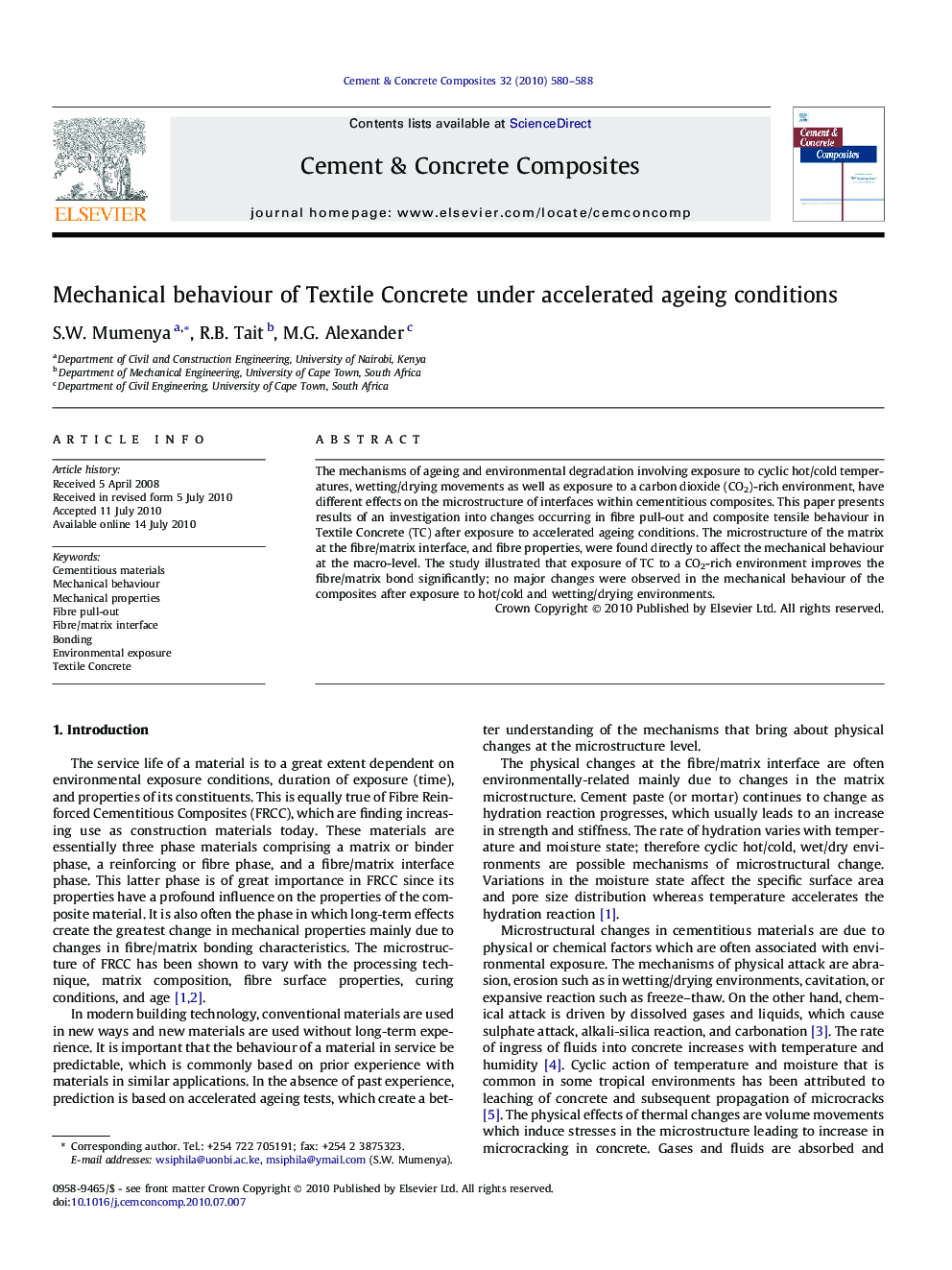| Article ID | Journal | Published Year | Pages | File Type |
|---|---|---|---|---|
| 1455334 | Cement and Concrete Composites | 2010 | 9 Pages |
The mechanisms of ageing and environmental degradation involving exposure to cyclic hot/cold temperatures, wetting/drying movements as well as exposure to a carbon dioxide (CO2)-rich environment, have different effects on the microstructure of interfaces within cementitious composites. This paper presents results of an investigation into changes occurring in fibre pull-out and composite tensile behaviour in Textile Concrete (TC) after exposure to accelerated ageing conditions. The microstructure of the matrix at the fibre/matrix interface, and fibre properties, were found directly to affect the mechanical behaviour at the macro-level. The study illustrated that exposure of TC to a CO2-rich environment improves the fibre/matrix bond significantly; no major changes were observed in the mechanical behaviour of the composites after exposure to hot/cold and wetting/drying environments.
